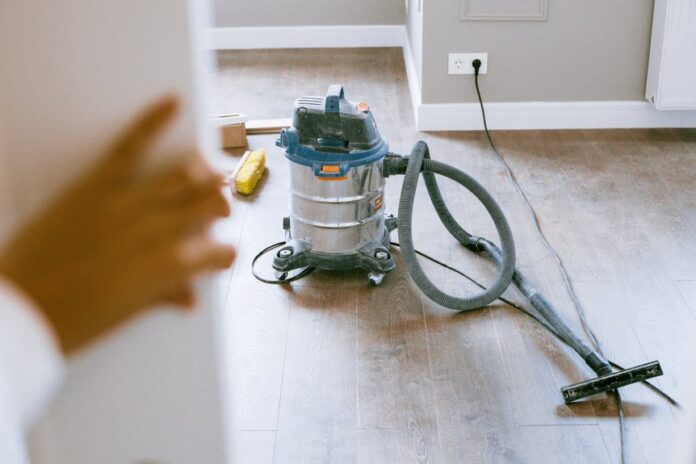As much as we rely on our heating and air conditioning to keep us comfortable, problems can sometimes come up. But don’t worry—with a little knowledge and some basic troubleshooting tips, you can address many common HVAC issues on your own.
In this guide, we’ll discuss seven of the most common problems that homeowners face with their HVAC systems and provide step-by-step instructions for resolving them. So whether it’s a malfunctioning thermostat or uneven cooling in your home, we’ve got you covered. Let’s dive in and get your HVAC system back up and running smoothly.
Thermostat Issues
One of the most common problems with an HVAC system is a malfunctioning thermostat. This can result in incorrect temperature readings, failure to turn on or off, or even a complete shutdown of your system.
To troubleshoot this issue, start by checking the batteries in your thermostat and replacing them if necessary. If that doesn’t solve the problem, try resetting the thermostat by turning it off for a few minutes and then back on again. You may also need to check the wiring connections or consider replacing the thermostat entirely.
If your thermostat is constantly malfunctioning or showing signs of wear and tear, it may be time to consider replacing it. Signs that your thermostat needs to be replaced include inconsistent temperatures, frequent system cycling, and outdated technology. Upgrading to a newer model with advanced features such as programmable settings or Wi-Fi connectivity can also improve the efficiency and effectiveness of your HVAC system.
Air Filter Clogs
A clogged air filter can cause many issues with your HVAC system, including reduced airflow and poor air quality. To prevent this, be sure to regularly replace your air filter according to the manufacturer’s recommendations. If you’re experiencing issues with your system and suspect a clogged filter, try replacing it with a new one. This simple fix can often solve problems with inadequate cooling or heating.
Don’t forget to routinely check your air filter for clogs, as they can occur more frequently depending on factors such as the number of occupants in your home, pets, and the surrounding environment. We recommend checking your filter every 1-3 months and replacing it as needed. This will not only prevent issues with your HVAC system but also improve the overall air quality in your home.
Air Duct Leaks
Air duct leaks can lead to uneven cooling or heating in different rooms of your home. If you notice that some areas are significantly warmer or cooler than others, check for any gaps or holes in your air ducts and seal them with foil tape or mastic sealant.
Refrigerant Leaks
If your HVAC system is not producing enough cool or warm air, it could be due to a refrigerant leak. This can also result in higher energy bills and reduced efficiency. If you suspect a refrigerant leak, you need to call a professional HVAC technician to properly diagnose and repair the issue.
Handling refrigerant on your own can be dangerous and potentially harmful to both you and the environment. Refrigerant is a chemical compound that needs to be handled and disposed of properly, as it can cause skin irritation, respiratory problems, and environmental damage if not handled correctly. Only trained and certified HVAC technicians have the knowledge and equipment to safely handle refrigerant leaks, so it’s best to leave this task to the professionals for your safety.
A Noisy Unit
A loud HVAC system can be disruptive and annoying. If your unit is making unusual noises such as banging, rattling, or squeaking, it could indicate a loose part or an issue with the motor. In this case, it’s best to call a professional for assistance.
Frozen Evaporator Coil
If your air conditioner is not cooling properly or has stopped working altogether, it could be due to a frozen evaporator coil. This can be caused by dirty air filters, low refrigerant levels, or restricted airflow. To troubleshoot this issue, check and replace your air filter if needed, and make sure all vents are open and unobstructed. If the problem persists, it’s best to call a professional for further assistance.
The evaporator coil can typically be found inside the indoor unit of your air conditioning system. It is responsible for removing heat and humidity from the air, allowing cool air to circulate throughout your home. The exact location of the coil may vary depending on the type and model of your AC unit, but they’re generally located near the bottom or side of the main compartment. If you’re unsure where to find your evaporator coil, consult your owner’s manual or contact an HVAC technician for assistance.
Electrical Problems
If your HVAC system is not turning on at all, it could be due to an electrical issue like a tripped breaker or blown fuse. Check your circuit breaker panel and replace any blown fuses to see if that solves the problem. If not, there may be an issue with the wiring that requires professional attention; click here for more info.
Overall, regular maintenance and prompt troubleshooting can help keep your HVAC system running smoothly. However, if you encounter any major issues or are unsure how to resolve a problem, it’s always best to seek the help of a professional HVAC technician. With these tips in mind, you can stay cool and comfortable all year round.









